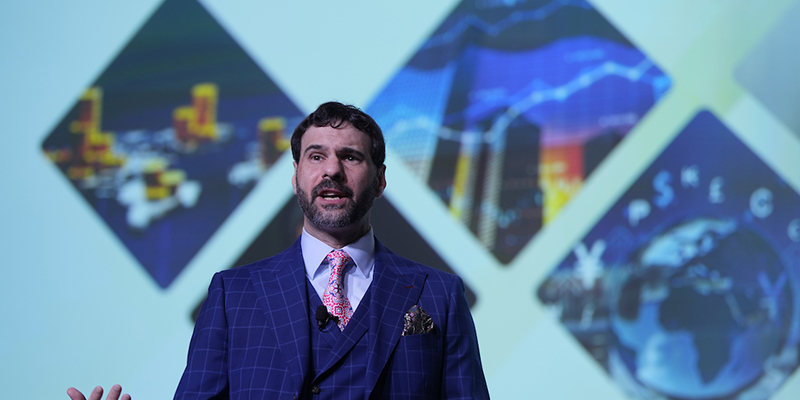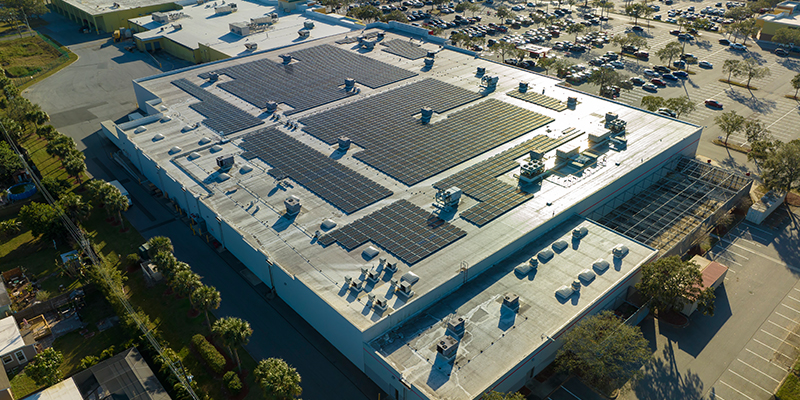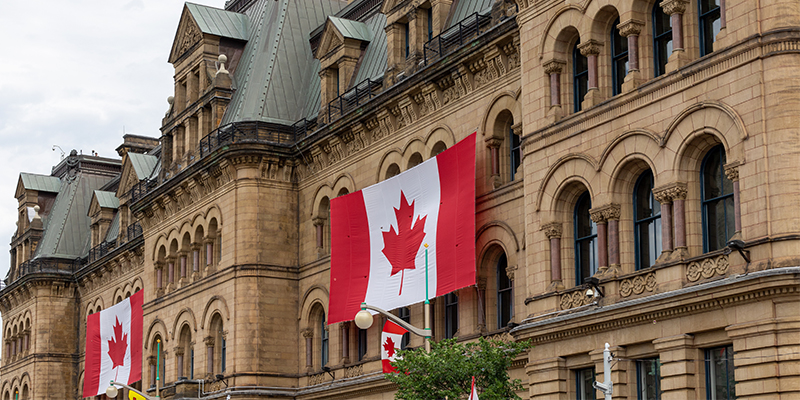By Brielle Scott
The commercial real estate landscape in 2025 is being shaped by an unusual mix of macroeconomic headwinds, policy uncertainty and emerging growth opportunities, said Ryan Severino, chief economist and head of research at BGO, in his keynote remarks at CRE.Converge this week in Toronto.
“It’s an opportune time to be talking about what’s happening on both sides of the border, in the economy and commercial real estate,” he began.
Uncertainty has become the defining characteristic of today’s economy. From tariffs and trade disputes to shifting central bank policies, volatility is reshaping growth trajectories. The U.S. effective tariff rate on Canada recently spiked above 19%, while Canada’s response was comparatively modest, reducing the inflationary shock north of the border. Even so, both economies are contending with renewed price pressures and supply chain disruption.
This turbulence has slowed GDP growth across major economies. In the U.S., real consumer spending – typically the engine of demand – has been flat in 2025, underscoring how fragile growth momentum has become.
Severino provided a brief overview of the major CRE sectors, highlighting the current landscape in both Canada and the U.S.
Industrial
“One of the things that you see on both sides of the border is that industrial vacancy rates have gone up over the last few years, and that’s just a function of the supply side,” said Severino.
Canada’s industrial vacancy continues to rise, reflecting both robust construction and tariff-related risks to demand. Still, logistics rents are growing faster than inflation, buoyed by the sector’s essential role in the economy and structural shifts in consumption.
Multifamily
Canadian apartments remain a story of increasing supply. Net absorption has generally kept pace with new completions, though vacancy rates have edged higher. In the U.S., demographic shifts – less geographic mobility and slower population growth – point toward a weaker apartment recovery ahead.
“There’s a chance that for the first time in recorded history, U.S. population growth is negative [for 2025],” Severino added.
Retail
Contrary to repeated predictions of decline, retail continues to surprise on the upside. In Canada, momentum is strong with occupancy running near capacity. In the U.S., sales per square foot have risen 72% since 2000, reflecting improved efficiency and resilience in the face of e-commerce growth and pandemic-era disruption.
“The overwhelming majority of retail sales still occur in physical brick-and-mortar stores,” according to Severino.
Office
The office sector is perhaps the most nuanced. In Canada, downtown vacancy rates vary widely, from 25% in Class B and C buildings to under 9% in trophy assets. This bifurcation underscores the “haves and have-nots” dynamic, where high-quality buildings in prime locations command top dollar while lower-tier properties struggle to find tenants.
“I do think we need to probably clean [office] inventory up a little bit, similar to what retail had to go through over the last 10 or 15 years,” said Severino.
Beyond property fundamentals, the capital markets are entering a critical period. Roughly $2.1 trillion in commercial property loans are set to mature between 2025 and 2027. This wall of maturities will create both challenges and opportunities as borrowers, lenders and investors adjust to higher interest rate environments and evolving underwriting standards.
Despite the near-term strain, as monetary policy shifts from tightening toward easing, CRE performance should gradually improve.
“Once central banks stop raising interest rates – they don’t even need to start cutting, they just need to stop raising interest rates – commercial real estate returns very quickly revert from negative to positive,” Severino said, pointing to historical trends that demonstrate the same phenomenon.
He closed with several takeaways for those active in the market:
- Slower, not stalled. The economy, property fundamentals and capital markets are all decelerating under policy uncertainty, but activity has not ground to a halt.
- Short-term noise vs. long-term reality. While markets may fixate on current disruptions, their lasting impact is likely to be limited.
- Interest rates matter. Relief is coming, but at different speeds across geographies. CRE professionals should account for this divergence when assessing investments.
- Momentum is uneven. Opportunities exist, but growth varies widely across sectors and asset classes.
- AI is here. The artificial intelligence boom is already boosting investment in technology-related assets and infrastructure, suggesting new demand drivers for CRE. “In the first quarter of this year, the contribution to growth from [the computer equipment and peripherals] category was the second highest quarter on record ever, only surpassed by the first quarter of 1983,” Severino said.
The challenges of tariffs, inflation and slower consumer spending are real – but so are the opportunities. As Severino put it, momentum in CRE is still building, albeit slowly and unevenly. The task now is to position portfolios and strategies to capture that momentum as policy uncertainty begins to lift.

This post is brought to you by JLL, the social media and conference blog sponsor of NAIOP’s CRE.Converge 2025. Learn more about JLL at www.us.jll.com or www.jll.ca.








